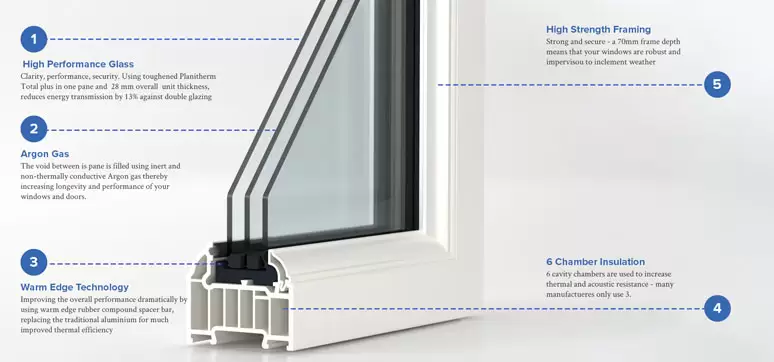When it comes to the energy efficiency in your home, you may hear words such as double glazing and triple glazing thrown around. You may also hear arguments for and against both with regards to thermal insulation. In light of all this, how do you decide which one you should go for; which one helps insulate your home better? To answer these questions, the first thing you need to do is familiarize yourself with what double and triple glazing are.
Post your Requirement
What are Double Glazing and Triple Glazing?
To put it in very simple terms, double glazing refers to the practice of using two panes of glass in windows instead of one while triple glazing means using 3 panes of glass. The rationale behind this is that adding extra panes of glass helps reduce heat loss from your home. There is airspace between the panes of glass and that together with the additional pane or panes helps improve thermal insulation. Therefore, if double glazing is an improvement over a single pane, then triple glazing should be better than double glazing, right? As it turns out, things aren’t that simple.
Enquire Now for ACP Sheet Glazing Service
More on Double Glazing
The first thing to understand here is that there is a method of measuring the energy efficiency of windows. This system is called the U value system and it measures the energy efficiency of your roof, floor and walls as well. To be more energy efficient the surface being considered should have a lower U value. Regular windows with one pane have a U value of 5 or more. Earlier, double glazing had a U value of around 3. However, with recent advances and innovations in the manufacture of the panes, this value has gone down to 1.6.
While this may seem like a great improvement, when compared to the U value of walls, which is 0.3, it is clear that windows have a long way to go to up their energy efficiency.
More on Triple Glazing
At first, it seemed that triple glazing could do what double glazing could not. In fact, triple glazing is being used extensively, almost exclusively, in countries with a very cold climate such as Norway and Sweden. The requirement in these places is that the U value of windows be no higher than 0.8. To lower the U value of a window to that level, not only do the windows need to upgraded to triple glazing from double glazing, but the frame itself needs to be insulated. The techniques used to manufacture the glazing also need to use krypton gas instead of argon, making the process more expensive.
The problem here is that while a U value of 0.8 might sound great, it doesn’t translate into high energy savings at all. In fact, when compared to other methods of energy efficiency, triple glazing has a very long payback time.
Another factor to consider is that triple glazing is only going to be effective if the rest of the house is well-insulated too. Otherwise, at night, cold spots develop near the windows causing draughts and drawing away heat.
Windows can absorb heat unlike roofs and walls. The best quality double glazing absorbs more heat but triple glazing actually reduces the amount of heat absorbed by a window.
This is why there is a debate raging about whether triple glazing is really as efficient at thermal insulation as was assumed. In certain circumstances and under certain conditions, it may help with thermal insulation, but it is by no means an across-the-board solution to questions about thermal insulation and energy efficiency.

























Post A Comment